When I think about the animals that I see and photograph off the New Jersey coast, the American ocean pout, Zoarces americanus, has to be one of the least handsome species.
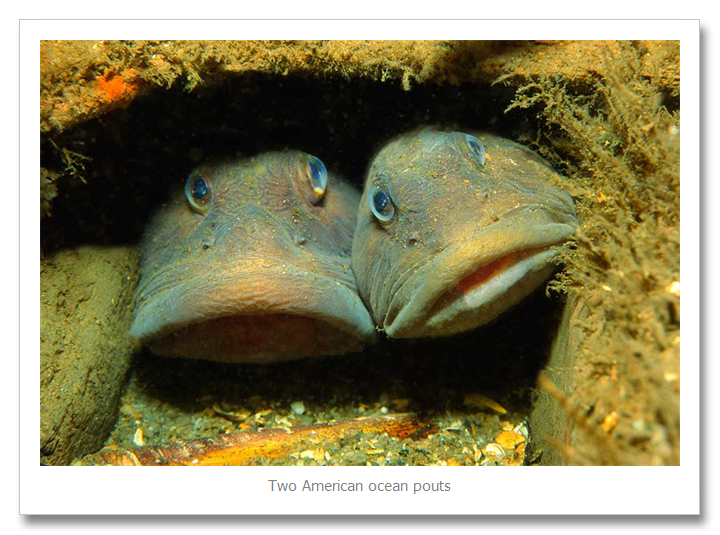
This fish is also known as the eel pout. It is found in holes in shipwrecks, artificial reefs and rock piles in the northwest Atlantic ocean (eastern Canada, New England, and the mid-Atlantic) . What I find fascinating about the ocean pout is that they have antifreeze proteins in their blood which allows them to live in near-freezing water.
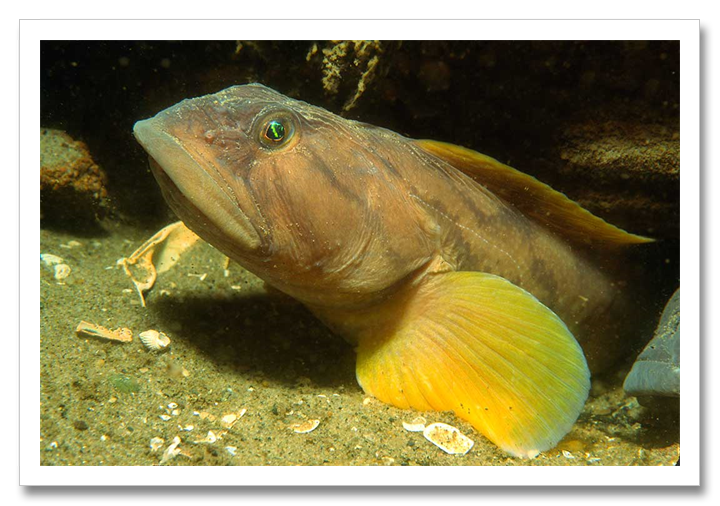
“Scientists have done studies wherein genes are taken from the ocean pout and implanted into salmon in an attempt to make the latter grow faster. These genes transfer the ocean pout’s tolerance for extremely cold waters to the salmon, allowing it to grow year-round. The promoter for the antifreeze protein gene is also used in conjunction with the growth hormone taken from a Chinook salmon, which leads to a higher concentration of the growth hormone in the blood; causing the genetically modified salmon to grow much more rapidly than it would naturally. Controversy has arisen, as some view the altered fish as a potential threat to ordinary salmon if it is ever allowed to enter the wild. Chefs and grocers in numerous US states have agreed not to sell the new fish over these concerns, though the fish is believed to be safe for human consumption.
In June 2006 the Unilever company announced that it would use genetically modified yeast to grow antifreeze proteins based on a gene from the ocean pout, and use it to improve the consistency and storage properties of its ice cream brands.” eNature, https://www.enature.com/fieldguides/detail.asp?recnum=FI0085.
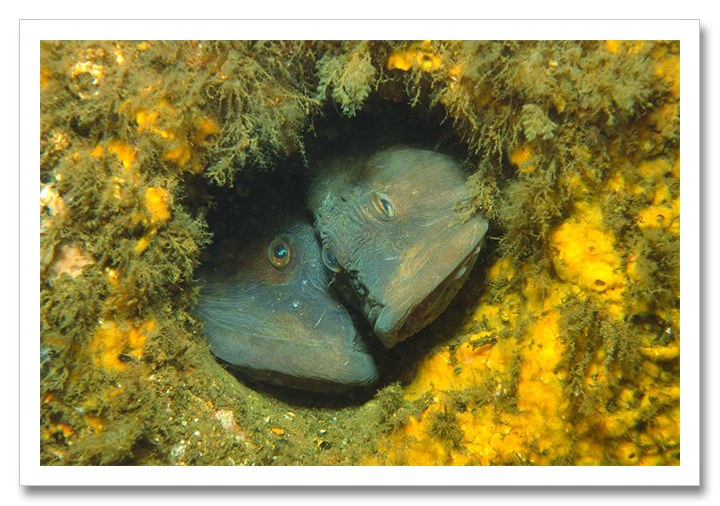
“The pout has a protein in its blood that keeps its tissues from crystallizing at normally freezing temperatures, which allows it to live in colder water. One ice cream maker saw opportunity in this—ice cream that melts at a lower temperature requires less cream, and therefore is less fattening—and developed a synthetic version of that gene for use in its products. The FDA gave it the go-ahead and voila! Less melty ice cream.
The key word there is “synthetic” — the ice cream isn’t made from the fish’s protein, but an artificial protein that has been derived from it. (Similar processes are used to make some vitamins and vegetarian cheeses.) All of which makes fish-inspired rocky road more appetizing than, say, pink grapefruit juice, which commonly gets its perfectly pink hue from the actual shell of an actual beetle.” Rob Anderson, https://www.boston.com/bostonglobe/editorial_opinion/blogs/the_angle/2010/09/poutfish_the_ma.html.
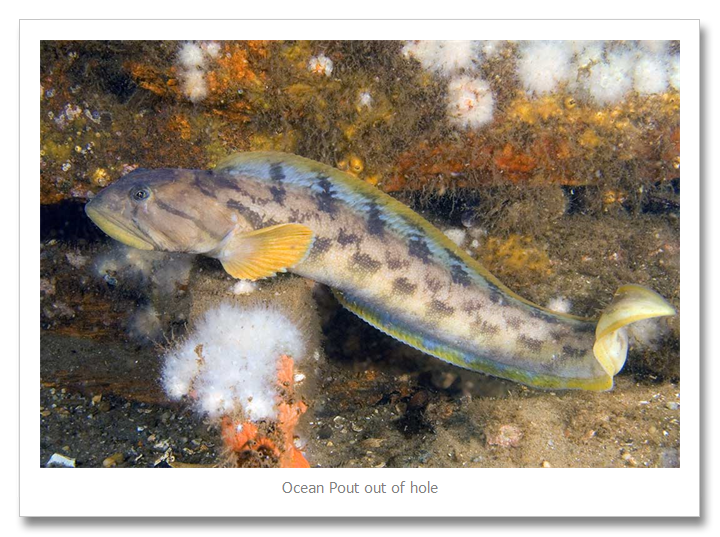
I normally don’t see ocean pouts out of their holes like this. When I do, I wonder about the oxygen levels on the bottom. Ocean pouts don’t have swim bladders so when the oxygen levels at the ocean bottom get low, they have to swim higher in the water column. I remember seeing this years ago when low oxygen levels killed a number of fish off the coast of New Jersey. There were a lot of dead ocean pouts.
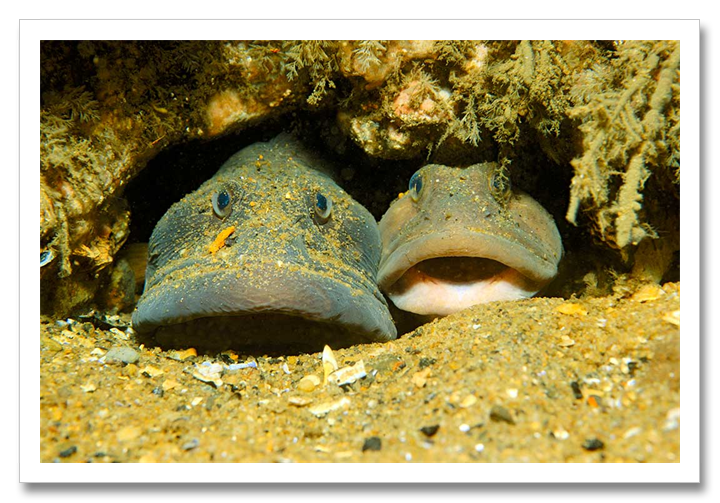
They are certainly comical looking and I enjoy photographing them. What I like about ocean pouts is that you never know what kind of face they are going to make and I also find that some are way more tolerant about photographers approaching than others.
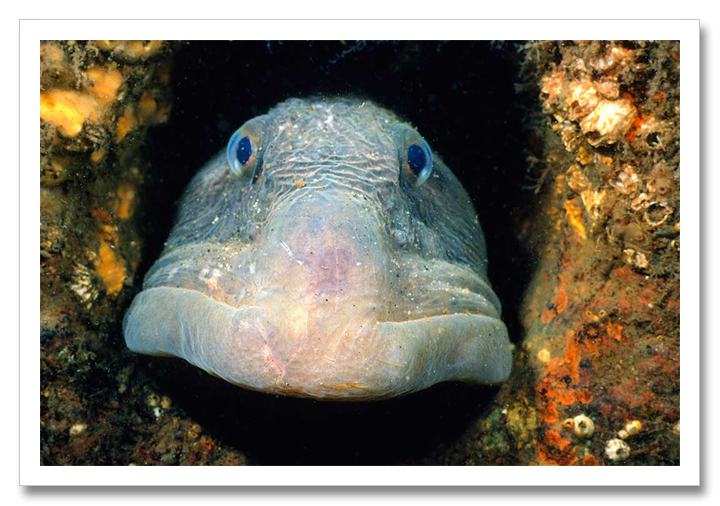
© 2014, Herb Segars. All rights reserved.

